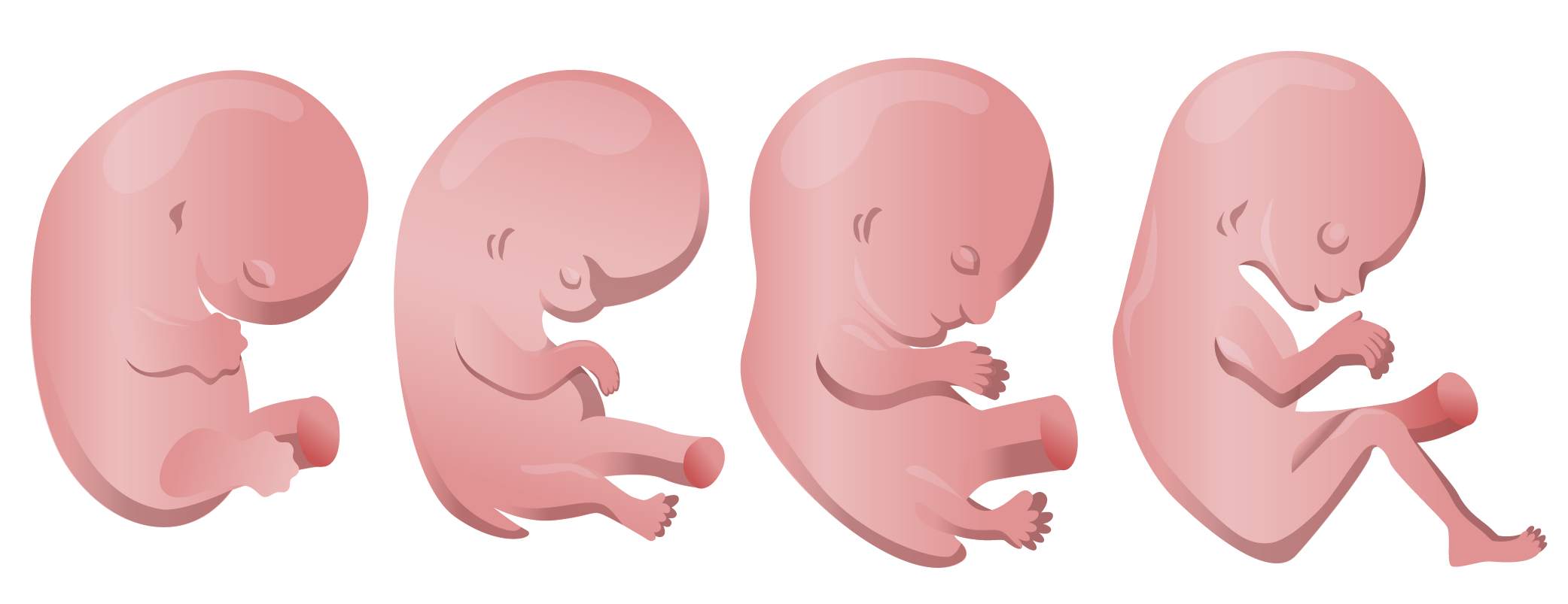Playlist
Show Playlist
Hide Playlist
Signals Responsible for Limb Growth
-
Slides 03-11 Signals Responsible for Limb Growth.pdf
-
Reference List Embryology.pdf
-
Download Lecture Overview
00:01 While genetic signaling underlies the development of every structure in the human body, one very well researched area is the development of the limbs and the signals that are responsible there. 00:11 So we´re gonna spend a little bit of time talking about the structures and genetic signals that allow the limbs to extend and differentiate. 00:19 Now, the first and most important structure we have in this regard is called the apical epidermal ridge. 00:25 It´s part of the ectoderm that´s over lined the limb buds but this ridge puts out FGF8, Fibroblast Growth Factor 8 into the limb bud and initiates and maintains elongation of the limb and if you were to get rid of FGF8, the limb would not form and if you implant FGF8, kind of impregnated beads into an embryo along its torso, it will actually start forming an additional limb in that location. 00:57 So FGF8 initiates and maintains the outgrowth but it´s not what makes my scapula different from my humerus, from the bones of my forearm and so forth. 01:08 That´s gonna be the Hox gene family. 01:11 Now, you may recall we´ve discussed the Hox genes in development of the back and that they make your cervical, thoracic, lumbar, and sacral segments different from each other and a similar process is taking place in the limbs. 01:23 As we grow more distally, more members of the Hox gene family are expressed. 01:29 So Hox gene family number 9, 10, 11, 12, 13 are expressed as we go further distally in the limbs. 01:39 They´re all been expressed out in the hands and digits but only Hox family number 9 is at present in the scapula and proximal humerus. 01:47 And that´s what creates this proximal distal patterning. 01:51 And once again, this is reliant on FGF8 to maintain the outgrowth of the limb bud. 01:56 Now, the Hox gene family creating proximal distal patterning is not the only thing going on in the development of the limb. 02:04 Initially, the very inferior edge of the limb bud has an area called the ZPA, the Zone of Polarizing Activity and that´s creating sonic hedgehog, and the more exposure to sonic hedgehog this area of the limb experiences, the more it´s going to develop like the fifth and fourth digit. 02:22 And the thumb experiences less exposure to sonic hedgehog and so it´s going to differentially develop in a different manner. 02:30 That´s what makes our thumb on the lateral side of the digit different from our pinky finger or fifth digit. 02:36 It´s all about the exposure to sonic hedgehog. 02:39 So if we have a disruption of the process of limb outgrowth due to FGF8 disruption, we´re going to wind up with a variety of limb malformations. 02:48 If FGF8 is simply not present, we can have Amelia of one or multiple limbs. 02:54 Amelia is just the absence of any limb whatsoever. 02:57 Distinct from that is phocomelia. 03:00 Phocomelia is when we have a relatively normal hand or foot but all the intervening region of the limb is not present. 03:08 So we have the hand and foot seemingly just extending directly off of the torso. 03:12 Meromelia is when a distal segment is absent. 03:17 So it would be the absence of a hand or a foot but presence of more proximal regions of the limb. 03:22 And one very famous occurrence is the use of thalidomide as an anti-nausea medication. 03:27 Thalidomide works very well as an anti-nausea medication, however, it is a severely teratogenic substance which compromises limb formation very badly and for that reason, thalidomide is absolutely contraindicated in any woman who is or may become pregnant. 03:44 Thalidomide binds to a protein known as C R B N which inhibits a ubiquitin ligase protein. This results in the accumulation of several toxic substrates that lead to three main effects which collectively result in impaired limb development: First there is a downregulation of F G F 8. It also leads to oxidative stress and the release of reactive oxygen substances that can induce apoptosis. As a third point it has anti-angiogenesis effects. 04:23 Now, just as FGF8 in the apical epidermal ridge can create problems, we can also have problems with too few or too many digits. 04:31 Most commonly, people can have polydactyly. 04:35 One or more digits extending off the hand. 04:38 So difficulties in the amount of sonic hedgehog that´s being produced and by the Zone of Polarizing Activity can cause these digits which may be vestigial or often, functional to appear. 04:50 Now, this tends to follow an autosomal dominant inheritance pattern and because of that, it will tend to reoccur in families once it´s present. 04:58 Thank you very much and I´ll see you on the next talk.
About the Lecture
The lecture Signals Responsible for Limb Growth by Peter Ward, PhD is from the course Development of Musculoskeletal System and Skin. It contains the following chapters:
- Signals Responsible for Limb Growth
- Disruption of the Limb Outgrowth
Included Quiz Questions
What molecular marker is the signal for mediolateral patterning?
- Shh
- FGF8
- BMP4
- Wnt
- Notch
What congenital anomaly arises due to disruption of limb initiation and presents with normal-looking hands or feet but without the intervening long bones?
- Phocomelia
- Amelia
- Ectrodactyly
- Achondroplasia
- Rhizomelia
What anti-nausea medication was previously prescribed to pregnant patients, which resulted in offspring with phocomelia?
- Thalidomide
- Cyclizine
- Metoclopramide
- Promethazine
- Ondansetron
Customer reviews
5,0 of 5 stars
| 5 Stars |
|
5 |
| 4 Stars |
|
0 |
| 3 Stars |
|
0 |
| 2 Stars |
|
0 |
| 1 Star |
|
0 |




